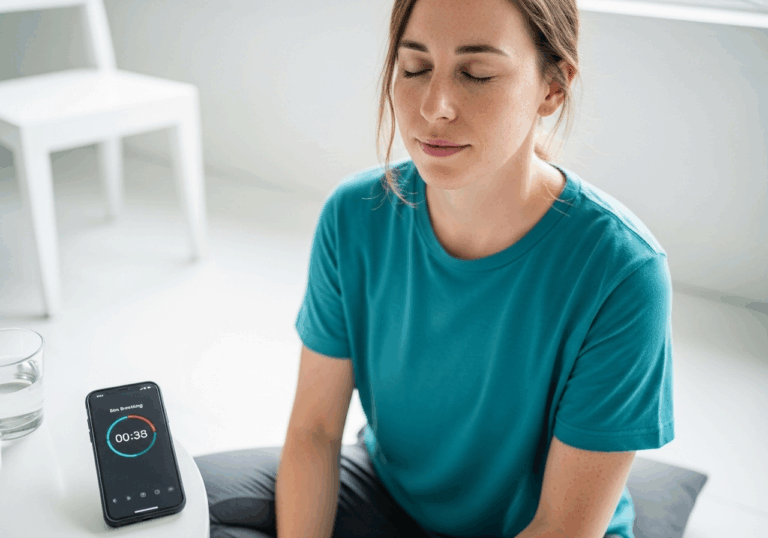Science-Backed Tips
Boost Your Mood with HRV Biofeedback Training
30% reduction in depressive symptoms for older adults.
📊 Did you know?
💡 Why It Matters
1️⃣
Improving depressive symptoms by 30% can significantly enhance quality of life for older adults.
2️⃣
Enhanced HRV is linked to better autonomic resilience, promoting overall health.
3️⃣
Socially active older adults may benefit more from HRV biofeedback, suggesting targeted interventions.
✅ Try These Micro-Tips
🎯
Engage in HRV biofeedback training for at least 20 minutes, three times a week.
🎯
Participate in social activities to maximize the benefits of HRV training.
🎯
Monitor your mood and HRV regularly to track improvements.
🎯
Consider joining a group or class focused on HRV biofeedback for support.
📚 The study
❓ Frequently Asked Questions ❓
Learn more
What is HRV biofeedback training?
HRV biofeedback training is a technique that helps individuals learn to control their heart rate variability through breathing exercises and relaxation techniques. It aims to improve autonomic resilience and overall well-being, particularly in older adults.
How does HRV biofeedback training affect depressive symptoms in older adults?
Research indicates that HRV biofeedback training can lead to a reduction in depressive symptoms by approximately 30% in older adults. This improvement is associated with enhanced physiological functioning and mood stabilization.
Who benefits the most from HRV biofeedback training?
Socially active older adults tend to benefit more from HRV biofeedback training compared to those who are less socially engaged. This suggests that social interaction may enhance the effectiveness of the training.
How often should one engage in HRV biofeedback training?
It is recommended to participate in HRV biofeedback training for at least 20 minutes, three times a week. Consistent practice can lead to better outcomes in mood and heart rate variability.
What is the significance of improved heart rate variability (HRV)?
Enhanced heart rate variability is linked to better autonomic resilience, which promotes overall health and well-being. Improved HRV can lead to better stress management and emotional regulation.
Can HRV biofeedback training be done alone?
While HRV biofeedback training can be practiced individually, joining a group or class can provide additional support and motivation. Group settings may enhance the learning experience and foster social connections.
How can I monitor my mood and HRV effectively?
Regularly tracking your mood and heart rate variability can be done using journals or mobile apps designed for this purpose. This monitoring helps identify patterns and improvements over time.
What are the long-term benefits of HRV biofeedback training?
Long-term benefits of HRV biofeedback training include sustained improvements in mood, reduced depressive symptoms, and enhanced overall quality of life. Additionally, it may contribute to better physical health and resilience against stress.
Is HRV biofeedback training suitable for all older adults?
HRV biofeedback training is generally suitable for most older adults, but those with specific health conditions should consult a healthcare professional before starting. Individual assessments can help tailor the training to meet personal needs.
What role does social interaction play in the effectiveness of HRV biofeedback?
Social interaction appears to enhance the benefits of HRV biofeedback training, particularly in older adults. Engaging in social activities can amplify the positive effects on mood and overall well-being.





